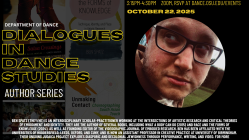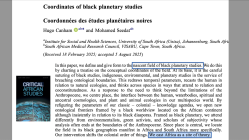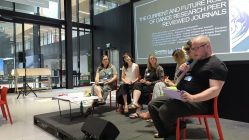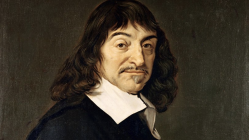Duration: 11:26
Project: Judaica
Song: Durme Durme; Shishelai
Practitioner: Nazlıhan Eda Erçin / Ben Spatz
Director: Nazlıhan Eda Erçin
Videography: Agnieszka Mendel
Date: 24 May 2017
Venue: Centre for Psychophysical Performance Research
Source File: J053
COMMENTARY
Eda
This video portrays two practitioners one of which is leading the session with two songs she brings in the studio. The lead practitioner asks her partner practitioner to respond to her singing in the form of ‘rhythm making.’ The two songs chosen belong to an area of cultural familiarity for the lead practitioner. Outside the studio, she articulates the closeness and comfort she feels in learning and singing them. The purpose behind the task of ‘responding in rhythm’ is to challenge this familiarity for the lead practitioner and push her to find unexpected and unfamiliar ways of meeting these two songs. The input of the supportive practitioner becomes crucial as he neither shares nor is exactly aware of the cultural and personal associations which the lead practitioner brings in. The video starts with a concentrated practice of mutual listening. The two practitioners are allowing themselves to change in response to what and how they hear from each other. As the work progresses, each practitioner finds unifying or diverging ways ‘in to’ and ‘out of’ the songs. The quality of the partnership sustains its dynamism throughout. The active act of listening and responding to each other produces fully engaged forms of movement forms, gestures and vocal choices. We witness the way the two practitioners, Ben and I, try to break each other’s habitual creative territories. What makes the work intriguing is the moments where the two practitioners clearly divert from each other but still remain in the shared space until something unexpected and extraordinary emerges again. The unique physical engagement of the practitioners with the songs produce a wide range of sonic echoes from various musical genres and geographies. Through the end of video, the question of who is leading and who is following becomes redundant as the practitioners reach to a level of flow and ecstasy where it becomes hard to direct the energy and predict what can happen next. They do not even hear the alarm clock as it keeps going on until the videographer gently warns them that it is the end of the session.
Agnieszka
Eda asked Ben to accompany her singing with a rhythm. Soon they both fell into an amazing flow of a hot musical discussion. Great polyrythmic conversations with Eda singing her songs on top from time to time clearly indicated that these two people have found a common language. The changing qualities of the improvised sounds coming out of their mouths truly surprised me! Ingenious pieces of crafted beatbox intermingled with traces of melodies served as skillful tools for channeling different emotions and colours of musicality. This burst of artistic affluence inspired me to get closer with the camera and frame their work into pictures. I felt happy that I can be there to witness it as it is happening and document it in a video.
Ben
When Eda invited me to work on rhythm, I opened a door that leads to a big territory which I know is underexplored. As we continued I felt supported and encouraged by her singing, and inspired by the way our voices combined musically in the space, but in fact I was not working primarily through partner contact. The flow of rhythmic musicality was very forceful and I was basically following it wherever it went: through beatboxing, Gardzienice-style audible breaths, clapping and slapping rhythms, and finally to this exciting moment when for the first time I explored the actions of laughing and crying within a rhythmic structure.







[…] 24 May 2017 following through touch rhythmic turbulence […]